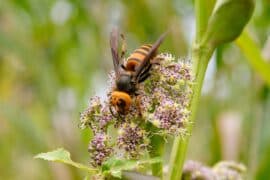Rhipidocladum clarkiae
(Rhipidocladum clarkiae)
Description
HABIT Perennial;caespitose.Rhizomes short;pachymorph.Culms arching;1000–1200 cm long;woody.Culm-internodes terete;thin-walled.Lateral branches dendroid.Branch complement many;flabellate;with subequal branches;thinner than stem.Leaf-sheaths glabrous on surface,or puberulous.Leaf-sheath oral hairs setose;3–6 mm long.Leaf-sheath auricles erect;0.4–0.7 mm long.Ligule an eciliate membrane;0.4–0.7 mm long.Leaf-blade base with a brief petiole-like connection to sheath.Leaf-blades deciduous at the ligule;lanceolate;3–9 cm long;4–9 mm wide.Leaf-blade surface glabrous.Leaf-blade apex acuminate. INFLORESCENCE Inflorescence composed of racemes. Racemes 1;single;unilateral;9–13 cm long;bearing 7–8 fertile spikelets on each.Spikelet packing distant. Spikelets solitary.Fertile spikelets sessile. FERTILE SPIKELETS Spikelets comprising 1 basal sterile florets;2–4 fertile florets;with diminished florets at the apex.Spikelets oblanceolate;laterally compressed;15–30 mm long;breaking up at maturity;disarticulating below each fertile floret.Rhachilla internodes elongated below proximal fertile floret. GLUMES Glumes persistent;dissimilar;shorter than spikelet;thinner than fertile lemma.Lower glume subulate;2.5–4.5 mm long.Upper glume ovate;4.9–6.7 mm long;chartaceous;without keels.Upper glume apex acuminate;awned;1 -awned.Upper glume awn 3 mm long. FLORETS Basal sterile florets barren;without significant palea;persisting on inflorescence.Lemma of lower sterile floret similar to fertile lemma;ovate;4–5 mm long;chartaceous;acuminate;awned.Awn of lower sterile floret 2–4.5 mm long.Fertile lemma ovate;7–9 mm long;coriaceous;without keel;5–9 -veined.Lemma surface scabrous.Lemma apex acute;awned;1 -awned.Principal lemma awn 4–6 mm long overall.Palea 1 length of lemma.Apical sterile florets resembling fertile though underdeveloped. FLOWER Lodicules 3;membranous.Anthers 3;4.5 mm long.Stigmas 2.
Taxonomic tree:







